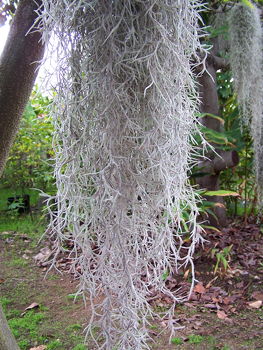
Return to This Plant's Category: Thunbergia to Tradescantia
Tillandsia usneoides

Code: 90350
Price: $9.95
Quantity in Basket: None
Family: Bromeliaceae
Spanish moss is the classic image of the deep South as it hangs from Southern Live Oak and Bald Cypress trees. This easy to grow epiphytic bromeliad thrives in warm, humid shady locations with tiny green and yellow flowers. Grow it in a greenhouse or use as a patio plant hanging from tree branches. Just drape it on an on a branch or overhang and sprinkle with water a couple of times a week in dry weather. Can also be used as a decorative element in floral arrangements, etc. Propagated by simply dividing the strands and hanging where desired. Native to southern United States and the tropics of South America. USDA zones 8 - 12. Supplied in a generous clump about the size of a football.



(B) Hanging
basket (D) Dwarf
under 12" (F) Flourescent lights for
indoor light culture (H) Humid
conditions (M) Miniature
under 6" (T) Terrarium
plant (W) Winter
flowering
Key to USDA Hardiness Zones
